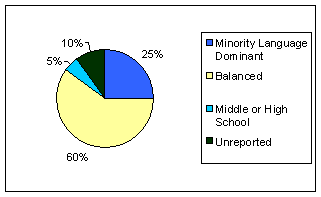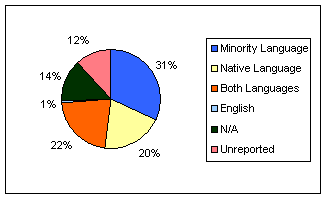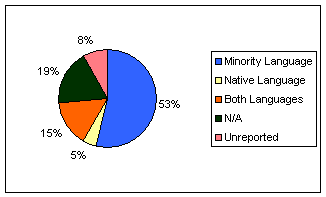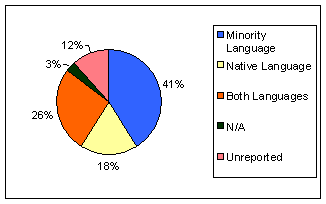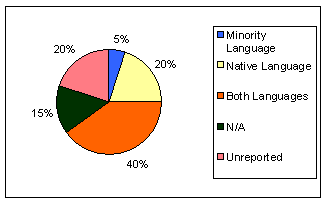Program Model
As of December 2000
104 (42%) are minority language dominant
85 (34%) are balanced
5 (2%) are differentiated
32 (13%) are middle or high school
22 (9%) are unreported

54 (63%) are minority language dominant
8 (9%) are balanced
3 (3%) are differentiated
16 (19%) are middle or high school
5 (6%) are unreported
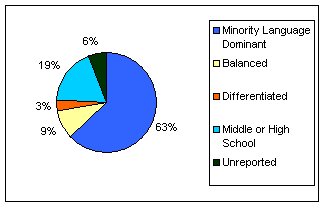
14 (41%) are minority language dominant
16 (47%) are balanced
0 are differentiated
1 (3%) is middle or high school
3 (9%) are unreported

5 (25%) are minority language dominant
12 (60%) are balanced
0 are differentiated
1 (5%) is middle or high school
2 (10%) are unreported
